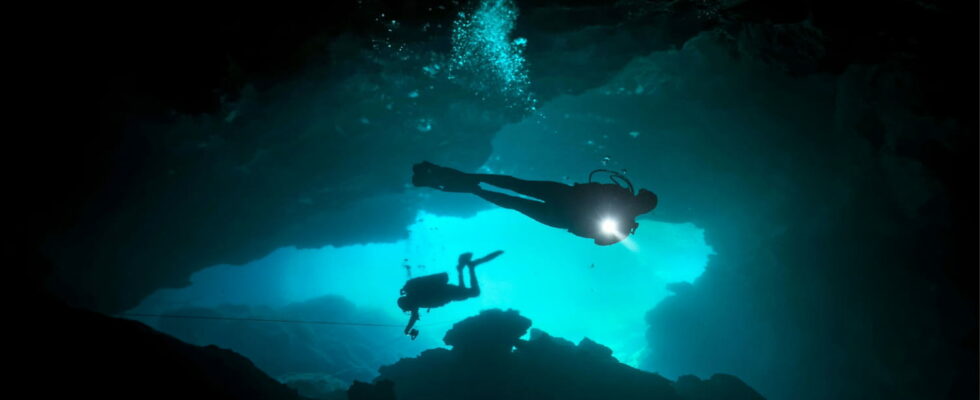In the Atlantic Ocean lies the deepest underwater cavity on the planet. Its exploration and analysis of its water could lead to an extraordinary discovery.
In the Atlantic Ocean, off the coast of Mexico, in the Bay of Chetumal, the deepest underwater cavity on the globe has been discovered, as announced by Ecosur in the magazine Frontiers. It measures around a hundred meters in diameter and 420 meters deep. The researchers also believe that they have not yet reached the bottom and that this estimate could therefore be revised upwards. This cavity was named Taam Ja’, meaning “deep waters” in Mayan. Before this discovery, it was Sansha Yongle which was estimated to be the deepest blue hole, 300 meters under the sea.
An imposing deep blue disk stands out in the turquoise waters of the Gulf of Mexico. Apart from its color, this hole is characterized by a decrease in oxygen content and poor circulation of water inside. This limits animal or plant life in such cavities. These blue holes originate during the last ice age known to the planet (between -115,000 years ago and -11,700 years ago). During this period, the sea level had fallen by at least 100 meters, causing some limestone rocks to emerge. These have suffered erosion following rain with strong acidity. As water seeped in, it eventually caused them to collapse, creating impressive chasms that were eventually covered by the sea.

By analyzing this giant hole using a CTD (conductivity, temperature and depth) probe, scientists noted a very interesting feature. The characteristics of the water located at the depth of the hole resemble those of the Caribbean Sea between 0 and 150 meters deep, particularly in terms of temperature and salinity.
This common point questions the existence of a connection between Chetumal Bay and the Caribbean Sea. Researchers estimate that this could hide an interconnected system of caves and tunnels tens of kilometers long. Further research is planned in the hope of discovering such a labyrinth. Specialists also suspect possible volcanic or tectonic processes at the bottom of the blue hole.
“This illustrates the need for continued exploration of these karst geological structures, their complex geomorphology and the development of cave branches. Diving into the underwater spatial geomorphology of the Taam Ja’ Blue Hole, the focus is on deciphering its maximum depth and on the possibility that it is part of a complex system of underwater and potentially interconnected caves and tunnels”, summarize the authors of the study.
